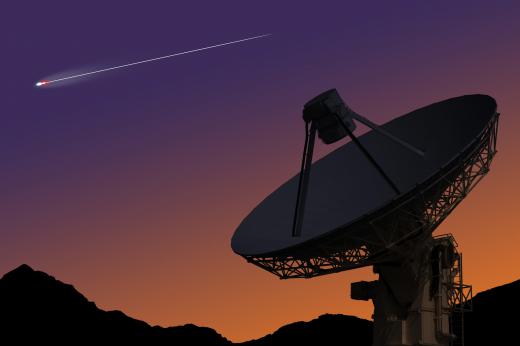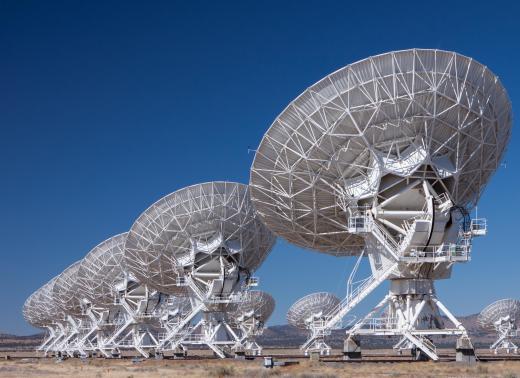What is SETI?
 Michael Anissimov
Michael Anissimov
SETI, or the Search for Extra-Terrestrial Intelligence, is a project which aims to detect extraterrestrial intelligent life. SETI primarily uses radio telescopes to search for extraterrestrial signals, although optical telescopes and other methods have been proposed. Any discovery of intelligent alien life by SETI would have profound implications for humanity's future; a negative result would imply that we are alone in the universe, and that the rise of intelligent life was a rare, freak-chance event.
The sky, as a whole, is not a strong radio emitter; terrestrial sources of radio waves are already far stronger than anything observed with radio telescopes. Any civilization which has discovered radio waves should throw off a steady stream of information into space, much as we have been doing with radio and television broadcast stations. Detecting these signals, if they exist, is a huge challenge, given all the potential sources of noise.

Many SETI researchers expect artificial signals to use a narrow range of frequencies, and any signal from outside the solar system should stay in one place in the sky; these criteria help to rule out man-made radio sources and natural sources such as pulsars. SETI radio astronomers have tried using huge supercomputers to scan for these signals in the telescope data, and the task was eventually turned over to a distributed computing network, SETI@HOME. Nevertheless, SETI has yet to announce the discovery of any signals believed to be coming from alien life.

Some have theorized that an alien civilization would not use radio-based communications at all, after having discovered a superior alternative. Optical astronomers have searched the sky for any artificial laser beacons in the visible range, but so far, nothing has turned up. Other, more exotic possibilities include communication using gravity waves, bursts of neutrinos, or some undiscovered quantum entanglement phenomenon. If communication is impossible, a SETI project might have to send out physical interstellar probes to discover intelligent life, which would be even more difficult.
AS FEATURED ON:
AS FEATURED ON:













Discussion Comments
I think that this was a very good article which was short and detailed.
Post your comments